Create an Import Data Map
Once you have the data downloaded from your online bank or credit card company, you need to tell FarmBooks how the bank arranged the data in the CSV file. You do this by creating a data map that describes the arrangement of the data. FarmBooks provides a wizard that steps you though the process by analyzing the data from the bank or credit card company. The wizard can be found by pressing the “Import” button at the top of the batch entry tab and choosing “create import data map” from the drop down menu. The wizard will automatically analyze the import data to determine what fields your bank or credit card company has provided. The final step of the wizard is where you actually map the bank fields to FarmBooks fields. The data map is only created once and can be associated to a bank account so that you can just simply import your data in the future.
-
- Click on Import Button: Create Import Data Map

- Click on Import Button: Create Import Data Map
- The Create Import Bank Data Map Wizard will load. Click Next to begin.
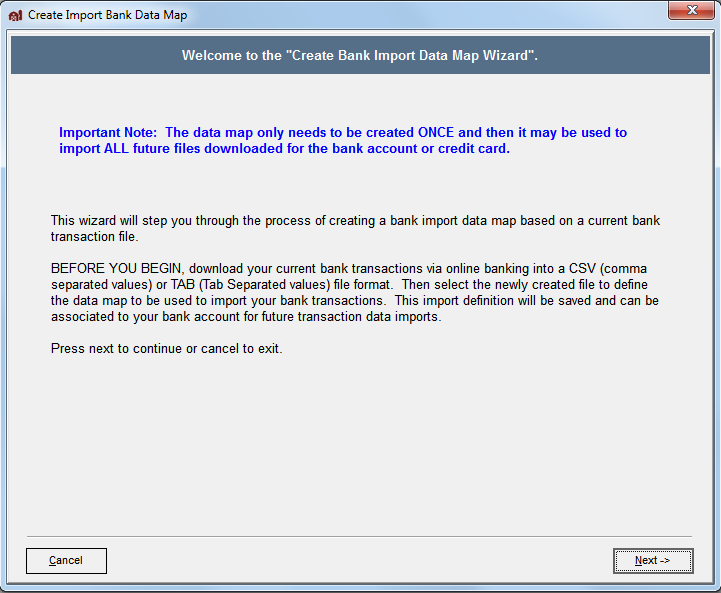
- The Name Data Map and Select Import File screen will load.
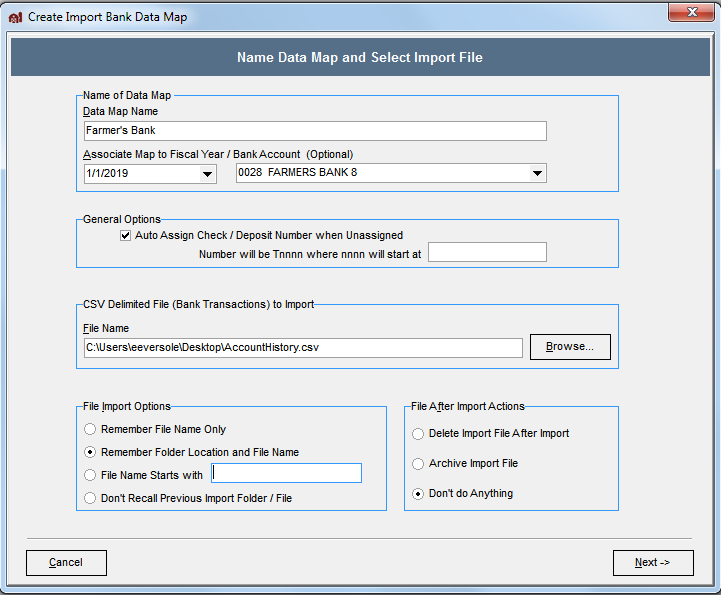
- Enter “Farmer’s Bank” as the Data Map Name. You may want to use the name of your bank so that it is easy to remember. If you have multiple bank accounts with the same institution, then it is recommended to create a data map for each one defined in FarmBooks. The import process keeps track of the last data range imported for the data map.
- We will select 0028 for the bank account.
- Press the Browse button to locate the import file. Once selected, you may accept the default values for the other fields and click Next to continue.
- Press Next to accept the defaults for the Enter Delimiter Information page. This page is provided in case you need to override the defaults detected from analyzing the data.
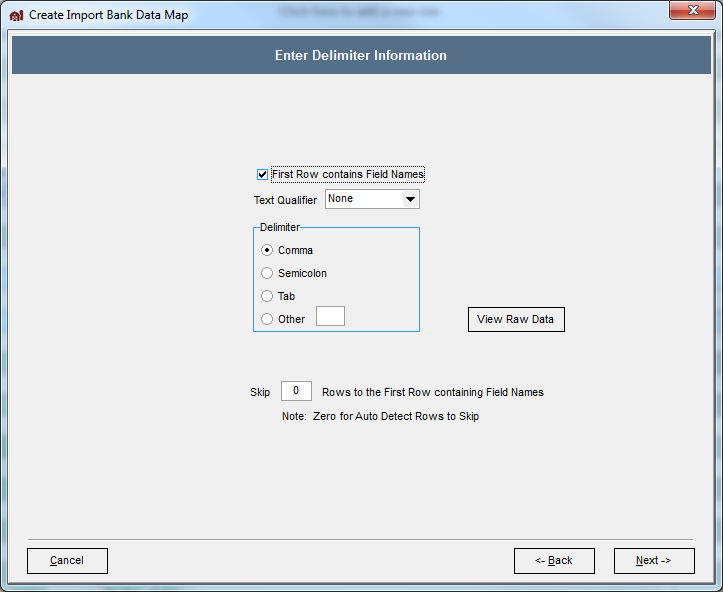
- On the Setup Data Map page, we will need to tell FarmBooks how your bank or Credit Card Company arranged its data fields. You can view your data in the yellow list at the top of the window. FarmBooks provides the fields listed in “Available Fields” in the leftmost list. Your bank’s data is shown in the “Available Source Fields” in the rightmost list. The center list “Mapped Source Fields” is where you describe how the fields from your bank on the right are mapped to FarmBooks available fields on the left. You can drag fields from the right and drop them in the center or highlight fields on the right and left and press the map button. Your bank may place amounts as either a debit and credit or a single value column. FarmBooks requires that you have a date, check number, description, and an amount at a minimum. However, a credit card data map will exclude the check # field as it does not have one so by checking “Import Data has no Check # Column” it will not be required. In this case, the system will automatically assign a unique number for each transaction line. Also, some financial institutions may embed the check # within the description field so you may need to check the field “Check # Embedded in Payee / Desc or Mapped Check #” and specify that field for the check # field in the Mapped Source Fields list.
The sample below shows an example where the data map uses an embedded field to specify the check number.
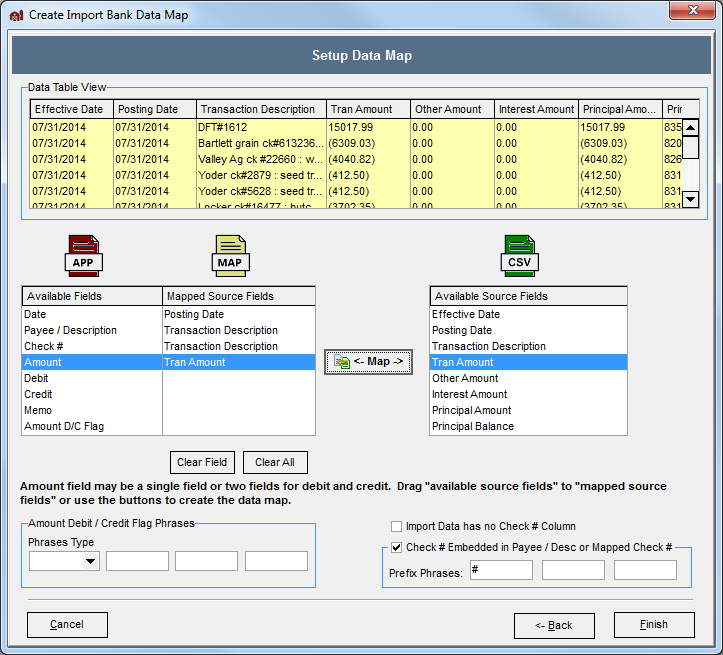
The sample data map below is an example where the amount is only a positive number but has a column specifying the type of transaction using the Amount Debit/Credit Flag Phrase feature. In this case, debits are specified by the phrases “Checks Paid” and “Debit”; everything else is assumed to be a Credit. However, you could specify phrases for credits instead of debits as in this example if there are few phrases.
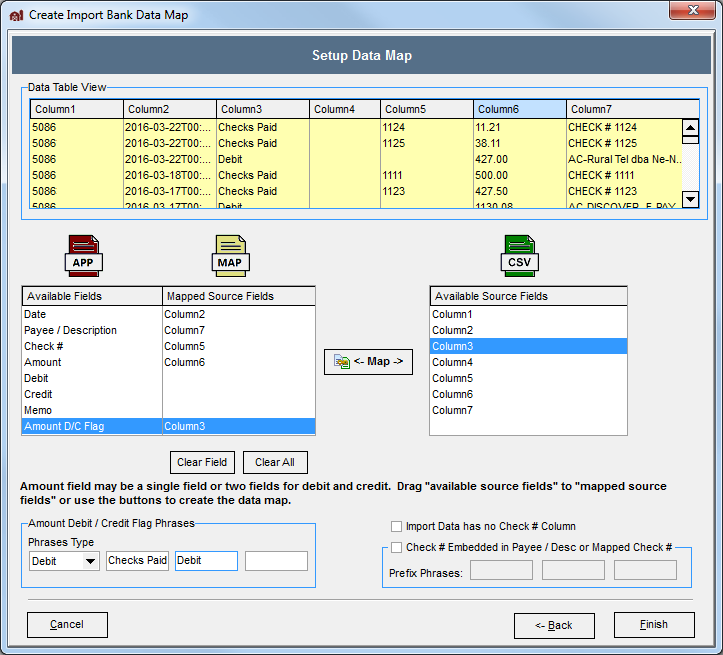
- Press the Finish button to complete
